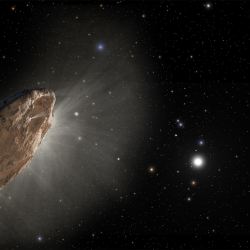I still remember the thrill I felt when I made my first scientific discovery – feeling that the late nights and hard work had all been worth it. I remember, too, the feeling that, at that moment, I knew something that nobody else – anywhere – knew or had ever known. It was a heady feeling. And then I wanted to tell everyone!
The first person I told was my academic advisor, who listened carefully and said, “Very good! Now write it up for publication.”
I spent the next month or so writing up my work – detailing why I’d wanted to examine this particular problem, what others had done in that and related areas, how I’d analyzed the problem, collected and analyzed the data, and what I thought it all meant. Then I sent it off to a journal and waited. A few months later, I heard back from the journal – they’d assigned the paper to a few scientists and an editor, all of whom had questions and comments about my work, and some dared to be critical of what I’d done!
I did some more work, responding to their comments, making the requested changes in the paper, teasing out my errors, scaling back some of my claims, and even acknowledging alternate explanations for some of what I’d found; explanations that threatened to take something that looked extraordinary into an unusual manifestation of an already-understood and rather mundane phenomenon.
I alternated between feeling let down and seething with impatience. Still, as time passed, I realized that I was not being mistreated, that the reviewers were not utterly lacking in imagination, but that this is how science works. New claims are not accepted until as many as possible alternative explanations can be considered and rejected. Only when a paper has been passed through this peer review process can you speak to the world with any degree of confidence. That’s what makes a recent announcement in USA Today so surprising.
“Metallic spheres found on Pacific floor are interstellar in origin, Harvard professor finds”
This past June, Harvard astrophysicist Avi Loeb was dragging a magnetic sled back and forth across the seafloor near Papua New Guinea, looking for fragments of a meteor that had incinerated in Earth’s atmosphere in 2014. Loeb was interested in the meteor because it matched his criteria for something that likely originated outside our solar system, and he wanted to see if he could recover any fragments. Over two weeks, Loeb and his crew explored the likely “footprint” where debris might have settled on the ocean, documenting his work in a blog on the online publishing platform Medium. Loeb’s work eventually led to his recovery of several hundred tiny metallic spherules with a cumulative mass of a fraction of a gram.
 Loeb claims that to date, five exhibit a metallic composition with a “distinct extra-solar abundance pattern [of elements],” noting that "This is a historic discovery because it represents the first time that humans put their hand on materials from a large object that arrived to Earth from outside the solar system.”
Loeb claims that to date, five exhibit a metallic composition with a “distinct extra-solar abundance pattern [of elements],” noting that "This is a historic discovery because it represents the first time that humans put their hand on materials from a large object that arrived to Earth from outside the solar system.”
He’s written a paper about his findings available online and says he has submitted the article for peer review and publication, although the journal to which it has been submitted is not known.
The problem is that, in publicly announcing his conclusions, Loeb has bypassed the normal process of scientific review – he’s not announcing a discovery so much as staking a claim and hoping it will pay off. The history of similar claims suggests that it’s unlikely to pan out.
Alien objects?
To get slightly into the weeds, Loeb bases his claim on a small number of spherules with a composition that includes beryllium, lanthanum, and uranium that he has dubbed, using their chemical symbols, “BeLaU.” He claims this composition has never been seen in any minerals collected in the system, so they must have originated elsewhere. But there are some problems with this claim, chief among them that we have sampled only a relatively small number of rocks from anywhere other than the Earth and Moon – fewer than 100,000 meteorites have been recovered globally (most from Antarctica) and, of those, fewer than 15,000 have been analyzed and described in the published scientific literature.
I know that 15,000 is a large number, except when we compare it to the million-plus asteroids, the millions of objects in the Kuiper Belt beyond Neptune, and the trillion-plus objects in the even more distant Oort Cloud. Our knowledge of mineral chemistry throughout the solar system is sparse, similar to Columbus’ knowledge of California after landing on a small island in the Caribbean. We simply don’t know enough about our solar system to claim that an odd combination of elements in a handful of tiny metal spheres dredged up from the bottom of the Pacific Ocean represents an extraordinary find or something relatively mundane where we have a chance to learn a little more.
From a geochemistry standpoint, I should add that finding both uranium and lanthanum in the same mineral is hardly shocking because these elements are fairly similar geochemically. The lanthanide elements, “rare earth elements,” are frequently contaminated with uranium and thorium. It’s also worth noting that not only do cosmic rays contain relatively large numbers of beryllium atoms, but beryllium is also formed when cosmic rays interact with atoms that are found in air and rock. Considering that the meteorite that entered our atmosphere in 2014 had likely spent eons in space, exposed to a constant bombardment of cosmic radiation, perhaps we should consider the possibility that those five spherules that contain beryllium might simply represent bombardment by cosmic rays over unimaginably long periods in space.
The bottom line is that there are mundane explanations for the “BeLaU” composition – only after they have been identified, discussed, and discarded should we move on to more exotic possibilities. And this is what the normal scientific process is about – ensuring we’ve considered the mundane before claiming to have witnessed the extraordinary. As an astrophysicist, Loeb can be excused for not being aware of the geochemical similarities of uranium and lanthanum, the composition of the early solar nebula, or the details of beryllium production via cosmic ray spallation; as a scientist, however, he cannot be excused for being unaware of the normal scientific process.
At the moment, nobody knows enough about what Loeb found to know if it represents a revolutionary discovery, a significant advance in human knowledge, or simply fragments of a rather boring rock that spent a huge amount of time in space. At the moment, Loeb has a hypothesis that will be, one hopes, reviewed, examined, critiqued, and tested. Over time, if it survives this scrutiny and testing, it might become widely accepted; if it survives even more rigorous scrutiny, it might one day be enshrined as a theory. Until then, though, it’s just his best guess and should be treated as such.
Note: If you’re interested in learning more about Loeb and his work, this New York Times Magazine article is worth a read.
And for those who prefer a bit of audio, here is a great interview with Loeb on the podcast People I Mostly Admire.

